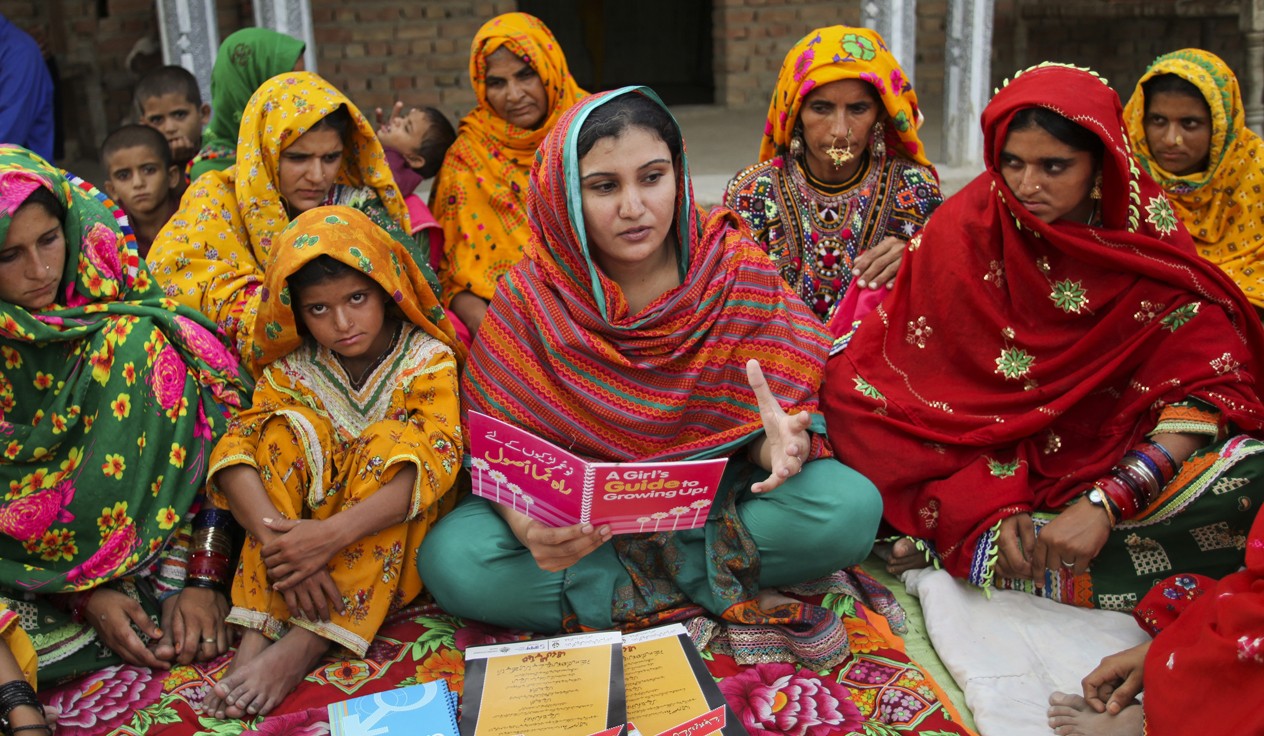
In addition to the provincial government, various NGOs in Sindh are trying to increase awareness about population planning methods

The Sindh Population Policy announced for this year aims to increase the contraceptive prevalence rate to 45 per cent by 2020 from its current 29.5 per cent. Contraceptives, perhaps, are the only way to control population in a social set up where early marriages are a norm and education a privilege.
Figures in the Sindh Population Policy show that in 2015 the provincial population stood at 46 million and it is likely to increase to 61.7 million by 2030. The policy aims to reduce childbirth to 2.1 children per woman.
In line with its policy, government ads are being aired on television where clerics endorse methods of family planning and gap between childbirths. However, a completely opposite attitude towards contraceptives exists even in urban centres where it is thought that they negatively affect fertility in women.
Rubina Jaffar, general manager at Hands, a non-profit organisation, helping families in rural Sindh, believes the recently announced Population policy is ambitious. "Contraceptives’ accessibility and affordability are the two most crucial aspects. Many women understand that family planning will help them but access to contraceptives is an issue."
In a patriarchal society like Pakistan women often do not go out of their houses without a male chaperone, and may not have access to contraceptives when they need it most.
The government-run Lady Health Workers (LHW) programme, which began in 1994, brings trained women to the doorstep who provide women with contraceptives. However, it only covers 52 per cent area of Pakistan, a gap Hands claims to fill by its over 2500 community based Health Workers called Marvi.
The Marvi project uses women from the community who may not have education up to class 10 -- a requirement for the LHWs. As a result, Marvi have access to far-flung areas where women have not received any formal education. It began in 2008 from Umerkot, where much of Sindh’s Hindu population lives but gradually scaled up to include Badin, Tharparkar, and other areas.
Read also: Campaigning in KP
The Marvi health workers receive a small stipend from Hands but also sell their products for a small profit. The commercial interest at the heart of it ensures uninterrupted supply, a claim Hands endorses.
On the other hand, LHWs are often seen protesting on roads after their salaries have been delayed. Their work hours are long, salaries meagre. They also face harassment on the streets, a recent report points out. A total of 22,576 LHWs work in Sindh alone, the report adds.
In the urban centre Karachi, another non-profit organisation, Aman Foundation, is running a programme to improve access to contraceptives in low-income neighbourhoods. Since its inauguration last year, Sukh is targeting four areas: Landhi, Bin Qasim, Korangi and Malir. Working in collaboration with the Sindh Population Welfare department, they offer door-to-door and tele-health services.
Read also: Editorial
A baseline study they carried out prior to the programme states that 25 per cent women who were pregnant claimed their pregnancy was unplanned. Of them, 46 per cent women between the ages of 20-29 used some form of family planning but later discontinued its use, even though 32 per cent of them had had an abortion.